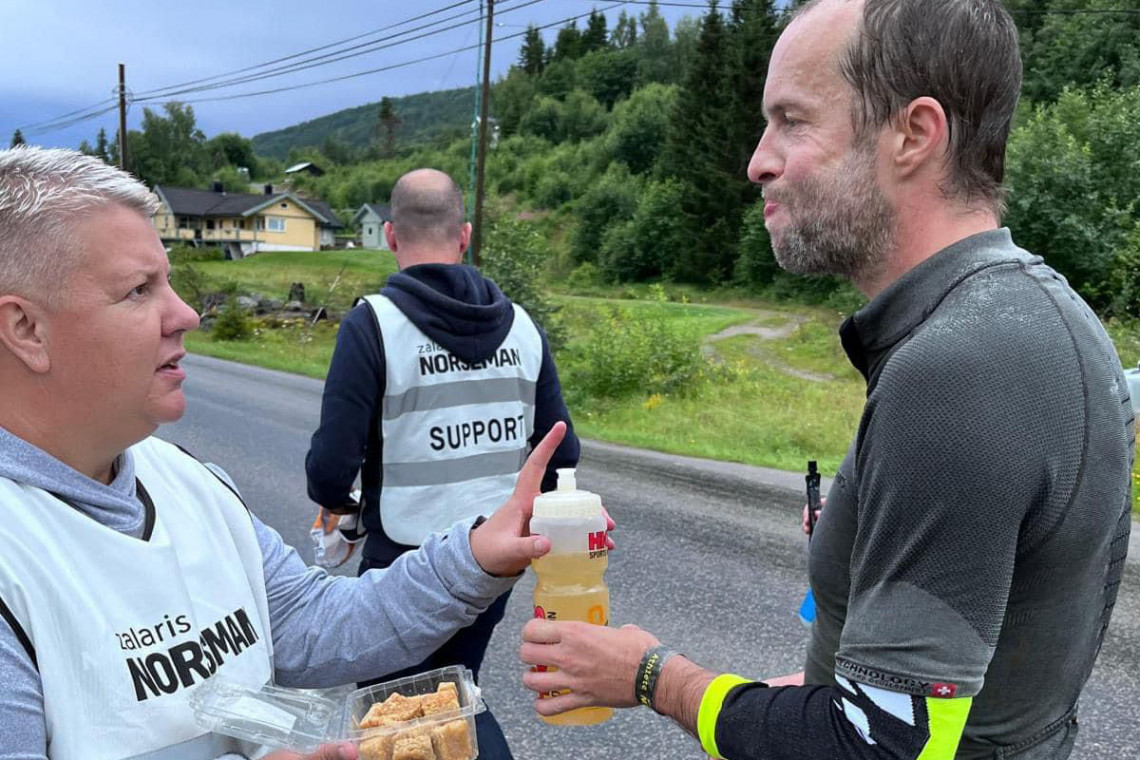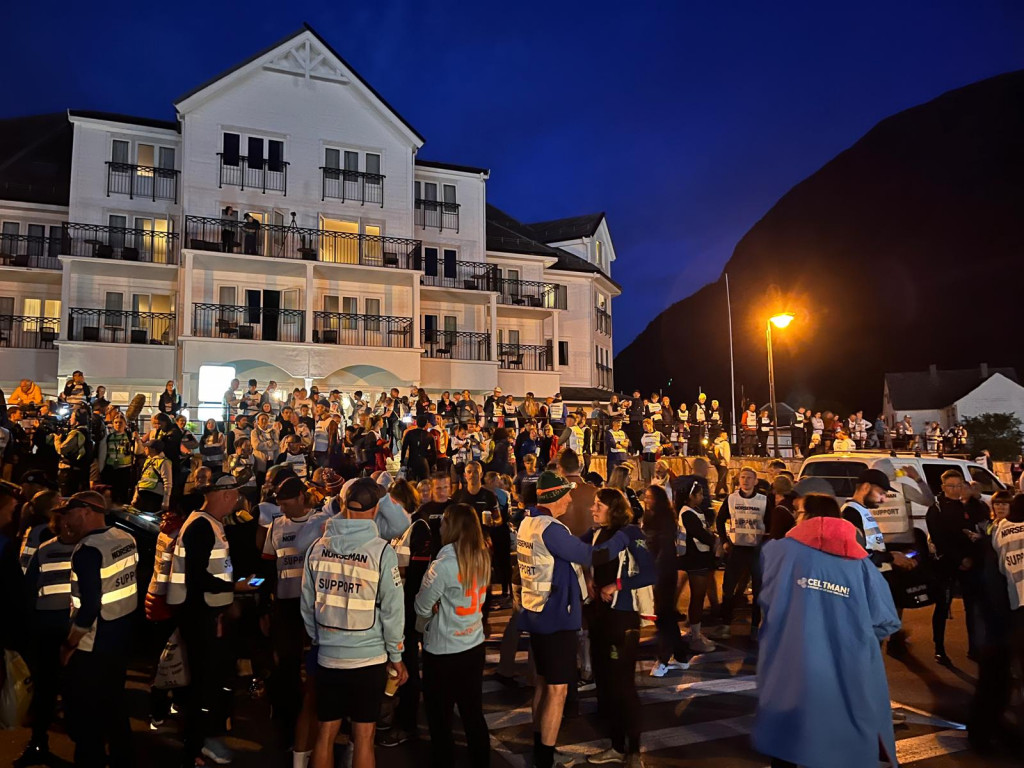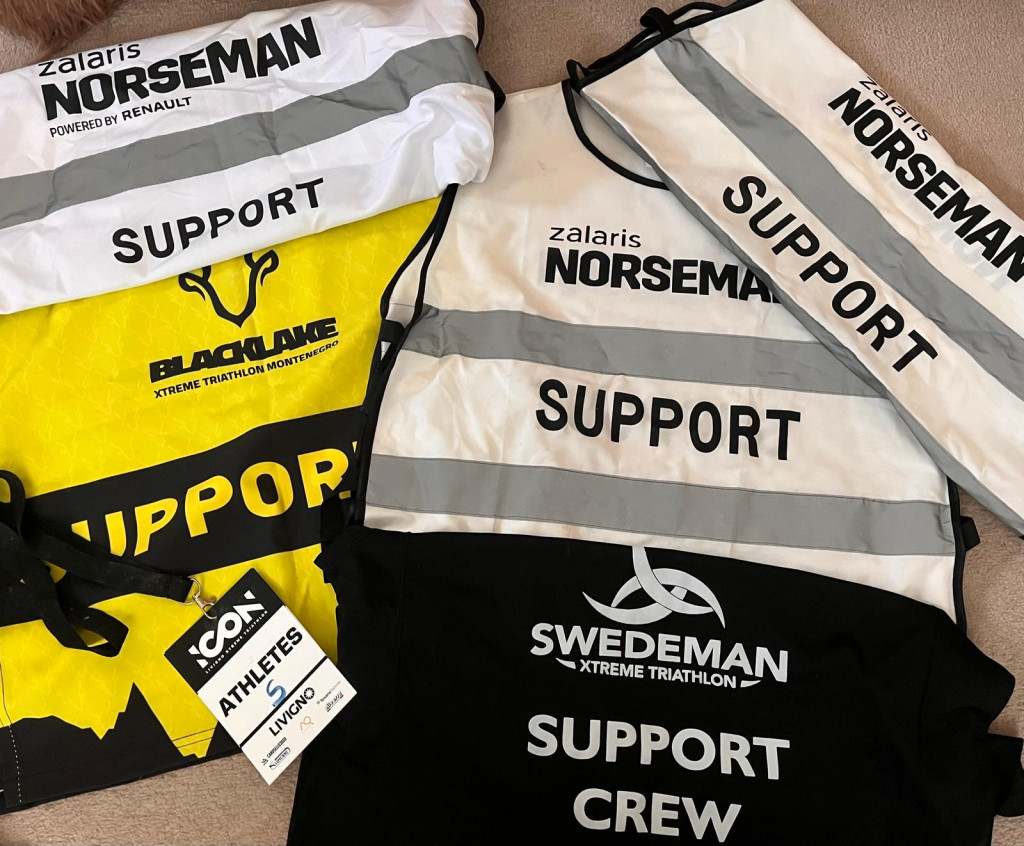The Unofficial Celtman Support Guide
- September 3, 2024
- Guide
By Greg Rochford – September 2024 All information is correct at the time of writing, however if you spot any inaccuracies, please... Read More

All information is correct at the time of writing, however if you spot any inaccuracies, please let us know. Also this is just a guide, expect things to change and be ready to adapt!
For more general advice, check out the detailed guide over at The Global Extreme Triathlon website
Norseman was one of the first extreme triathlons on the map and has gone from strength to strength to where we are today – Norseman is the host of the XTRI World Championships.
Norseman is set in the beautiful country of Norway, in the county of Telemark and the bike section takes you through the Hardangervidda and over a plateau, both of which are remote. The last 5km of the run takes you up to the top of the tallest mountain in Telemark, Gaustatoppen (Gausta), hence the vital need for support during this race.
Norseman takes place on the first weekend in August, the start location for the swim is Eidfjord. It’s an early start (as all extreme triathlons are) with transition opening at 2.45am.
There is limited parking at the hotel where the race starts, but there is additional parking in nearby supermarkets and restaurants. There are also plenty of EV charging stations. Just plan ahead that you may need to park further away.
This is one of the very few races that starts with the athletes jumping from a ferry for the start of the swim. Athletes must board the ferry in readiness for it to set off at 4am and the race starts at 5am.
37km of the run is on road – 25km is flat, then you have 7km of zombie hill followed by a further 5km still on road climbing slowly towards Gausta cut off. The final 5km is off road, following the trail path up to the top of the Gausta. It’s a challenging rocky section with very changing weather conditions. The course is marked by red T’s on rocks.
Like any extreme triathlon that requires support, the key role is to be on hand to provide your athlete with anything they may need throughout the day. Don’t take anything that is said personally as the athlete will go through some dark points during the race.
Only one support member is allowed into T1 with the athlete with they exit the swim. The organisers of the race are constantly amending the race following feedback from athletes and support crew and one area in need of improvement is how T1 works for the support member.
Previous years, I found this to be a stressful part of the whole day, when in fact it doesn’t need to be. This is because when your athlete has exited the water, you are fighting to get to the entrance to transition through a sea of other supporters who are waiting for their athlete to exit the water. In 2024 we saw a small change which was slightly better to start but still ended up being quite messy. So in 2024 they trialled having an entrance into T1 for support crew but you were only meant to enter this area when you heard your athletes number being called by a marshall as they were coming out of the water.

But as in previous years it ended up being a big crowd of people, my athlete just kept shouting my name as he ran past the entrance to T1 for support crew (can recommend this as it worked!), and I then chased after him when I was allowed to enter transition.
On the bike, support is not allowed until 20km into the route, this is clearly marked by race organisers with large green “support” flags. The last point that support can be offered is at 142km and again this is clearly marked with large red flags.
When providing support on the bike section, your car must only be parked on the right-hand side of the road, with all four wheels over the white line.
When it comes to the run section, you can park on the left or right-hand side of the road. Remember however that if you stop on the right-hand side of the road, you need to cross the road to provide support to your athlete, they cannot be crossing the road into traffic.
With regards to running with your athlete, the supporter is not allowed to run with the athlete until 25km into the run, at zombie hill. And you must either be alongside your athlete or behind, not in front.
On the bike section, there are some designated support locations that are indicated with large green flags, these can be good to use but you will find they are very busy, especially the first one.
There are marshals at the first support point to help you get parked but if you drive on a little further there are quieter locations to stop. You will need to agree this with your athlete before the race, so they know where to meet you. I find the easiest way to spot your athlete on the bike is to remember a specific bit of kit they are wearing (colour of the helmet, colour of the socks, have they got calf guards/long socks on, are they wearing a distinctive top), as this will help them stand out of the crowd. It’s important that you make yourself visible to your athlete as all they will see is a sea of white support vests.
Other than the “official support stops”, there are plenty of places to pull in along the bike route to provide support. Just remember, on the bike you can only park on the right-hand side and the car must be fully off the road.
After 142km, I would recommend heading straight to T2, it’s a long downhill ride for the athletes and they get there quicker than you think. I’ve often arrived just as my athlete was pulling into transition.
When you arrive at T2, there are 2 car parks, both of which are a walk to transition, and you will be guided to a parking space by marshals. Make sure you pack up everything your athlete may need as you won’t have a chance to go back before they are wanting to head out onto the run.
Once they have set off, you have the delight of looking like a pack horse as you take the bike and everything else back to the car!
The first part of the run there are plenty of places to stop as you can stop on both the left and right-hand side of the road, unlike the bike. When you come to zombie hill, the places to stop become a little sparser. This is mainly due to lots of athletes on the hill at the same time, meaning there are lots of support cars in a small location. I would recommend stopping wherever you find a spot (obviously not every 100 metres!! but every couple of km), your athlete will be pleased to see you and it breaks up the climb for them.
At 32km, you must park your support car, marshals are on site to guide you to a parking spot so be ready to decant with a rucksack of supplies and both athletes and support runners race pack. As the terrain changes from road to rocks, yout athlete may want to change socks and footwear so ensure you have discussed this in advance and teay you bring the various options they have requested (I think I took 2 pairs of alternative trainers to 37km plus socks and cream for their feet. Once again you will feel like a pack horse!!
There are refreshments from the race organisers at 32km, so I will often agree with the athlete to not meet them at 32km but for me to board the shuttle bus up to 37km (with supplies and race packs for the athlete and support runner) and meet them there. There are shuttle buses travelling between 32km and 37km throughout the day. You may find there is about 15 minutes at both ends plus the bus may be crowded mainly due to the additional bags everyone is carrying. The drivers are really good and if they can get you on, they will. Just make sure you allow time.
At 37km, there is a further refreshment stand from the race organisers and the point at which the support runner must join the athlete if they haven’t already.
It’s a long day for the athlete but also the support crew, so ensuring you are wearing something comfortable is vital, both clothing and footwear. You should also carry additional layers and change of clothes, as the during the day you can witness various weather systems (trust me, I’ve had it!). A head torch for transition set up and T1 is something you should definitely have with you.
I tend to wear trainers, running leggings and then layers on top as you start cold in the early morning, may be lucky to get some sun and you never know what the mountain is up to! If you are supporting late into the evening: warm jacket, hat, buff and gloves are a must.

Prior to the race, you can agree with your athlete how often they would like refreshments on the bike, or where you will meet them. I find it much easier to agree a distance (generally 20-25km) to aim to stop. If they want something they will stop, if they don’t the athlete will keep going. But every athlete is different.
Trying to keep tabs on their location can be tricky, it helps if the race has live tracking (which Norseman does) as you can then be ready for when they should be due to appear. Or putting an apple air tag in their bike jersey can be handy too! You do travel through some remote places so mobile signal can be poor at times. I’ve always been lucky, and not had any issues. Remember to check your messages regularly as the race organisers will send out messages if there are any changes to the course, issues etc.
In 2023, the mountain was closed due to really bad weather, this was clearly communicated to the supporters mobile number provided at registration but it was surprising to see how many athletes didn’t know about it as they were passing 32km. Hence why it’s important to provide a number of someone who will be there and have their mobile switched on!
In terms of navigation, I always use google maps (offline maps) for navigating a race (I’m generally on my own so my athlete will send the course which I can open in google maps).
However, with Norseman, it’s not necessary as there are signs and marshals at all the points you need to turn on the bike route, and the run is one road with just a turn for zombie hill but again there is a marshal aid station plus a car park. This means one less thing to worry about.
There is a petrol station about halfway on the bike at Geilo (just off the roundabout). There is also a supermarket if you need any supplies or food for yourself (don’t forget about you!). At Eidfjord, Gausta and throughout the bike route, there are plenty of charge stations for electric cars. I had an electric hire car one year and was so worried, but it was not an issue at all.
For the start of the race, you stay in Eidfjord or as close as you can, as this is where registration (Voringfoss Hotel), kit check (Voringfoss Hotel) and the race briefing (Eidfjord Sportshall) takes place.
There is a social swim (the days leading up to the race) and Norseman shop, which the manual states is at the Old yellow house by the Fjord. However, it’s actually located at a wooden boat house which is passed the Coop Prix, located to the left of the Voringfoss Hotel (if you were looking at the front of the hotel from the car park). The boat house (which is the location of the shop) has a floating pier next to it and this is where the social swim takes place.
The morning of the race (or the night before) you need to pack up all your belongings, as the finish of the race is at a different location, Gaustablikk.
There is a hotel (Gaustablikk Fjellresort) and hostel near the finish (can recommend both places to stay) but also plenty of cabins and apartments for rent in the area.
The t-shirt pick up takes place in Stova next to the Gaustablikk Mountain Resort (opposite the hotel and hostel), and this is where you will find the Norseman shop. The award ceremony takes place in the car park outside the resort (can’t miss it!)
For more general advice, check out the detailed guide over at The Global Extreme Triathlon website
Latest Comments